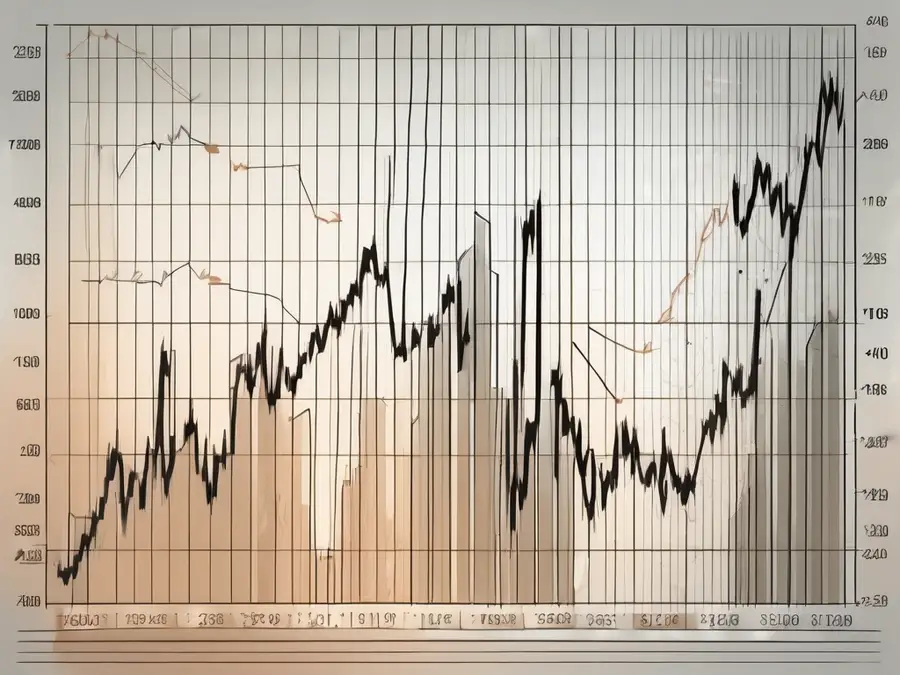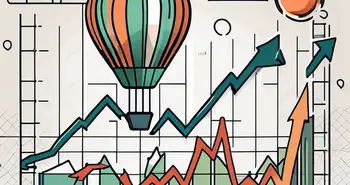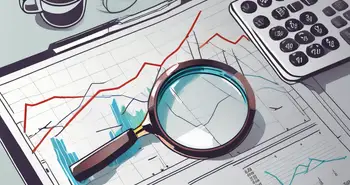The Whipsaw Phenomenon in Trading

In the world of trading, there are many factors that can influence the success or failure of a trade. One such factor is the whipsaw phenomenon. But what exactly is the whipsaw phenomenon? Let's delve deeper into this concept and uncover the secrets behind its impact on the trading world.
Defining the Whipsaw Phenomenon
The whipsaw phenomenon refers to a situation in which a trade is caught in a volatile market, resulting in a series of false signals that can lead to significant losses for traders. It is characterized by sharp price movements in both directions, making it challenging to predict market trends accurately. As a trader, it is crucial to understand the basics of whipsaw trading to navigate through these volatile conditions.
Whipsaw trading can be a frustrating experience for traders, as it often leads to losses and erodes confidence. However, by understanding the key characteristics of this phenomenon and employing effective strategies, traders can minimize risks and potentially capitalize on the market's volatility.
The Basics of Whipsaw Trading
Whipsaw trading occurs when a trader enters a position based on a signal, only to have the market quickly reverse and move in the opposite direction. This can happen due to various factors, including sudden shifts in market sentiment, unexpected news events, or changes in investor behavior. Traders must be aware of these potential triggers and adapt their strategies accordingly.
One of the challenges of whipsaw trading is the difficulty in accurately interpreting market signals. The rapid price movements and false signals can make it challenging to distinguish between genuine market trends and temporary fluctuations. Traders need to develop a keen sense of market analysis and utilize technical indicators to filter out noise and identify reliable trading opportunities.
Key Characteristics of Whipsaw Phenomenon
There are a few key characteristics that can help identify whipsaw trading conditions. Firstly, increased market volatility is a common feature of such situations. The rapid price movements make it difficult for traders to accurately interpret market signals. Traders should be prepared for sudden and significant price swings and adjust their risk management strategies accordingly.
Furthermore, whipsaw trading often occurs during periods of uncertainty, when market participants are unsure about the direction the market will take. This uncertainty can arise from various factors, such as geopolitical events, economic data releases, or changes in monetary policy. Traders need to stay informed about these factors and be prepared for sudden shifts in market sentiment.
It is important to note that whipsaw trading is not limited to any specific market or asset class. It can occur in stocks, commodities, currencies, or any other tradable instrument. Traders should be aware of the unique characteristics of the market they are trading and adapt their strategies accordingly.
In conclusion, whipsaw trading is a challenging phenomenon that can lead to significant losses for traders. However, by understanding its basics and key characteristics, traders can develop effective strategies to navigate through volatile market conditions. It is crucial to stay informed, analyze market signals carefully, and adapt risk management strategies to minimize potential losses. Successful traders embrace the volatility of the market and use it as an opportunity to capitalize on potential profit-making opportunities.
The Causes of Whipsaw in Trading
Understanding the causes of whipsaw in trading is vital for traders to develop strategies to mitigate its effects. Let's explore two significant factors that contribute to the occurrence of whipsaw in trading.
Market Volatility and Whipsaw
One of the primary causes of whipsaw in trading is market volatility. When markets become excessively volatile, the price movement becomes erratic, often resulting in false signals. This volatility can stem from various market factors, such as geopolitical events, economic data releases, or changes in market sentiment. Traders need to be aware of these factors and adjust their trading strategies accordingly to navigate through whipsaw conditions.
Market volatility can be influenced by a wide range of geopolitical events. For example, political tensions between countries can cause sudden shifts in market sentiment, leading to increased volatility. Economic data releases, such as interest rate decisions or employment reports, can also have a significant impact on market volatility. Traders must stay informed about these events and their potential effects on the market to anticipate and manage whipsaw situations.
Furthermore, changes in market sentiment can contribute to whipsaw conditions. Investor optimism or pessimism can quickly shift, causing rapid price fluctuations. For instance, positive news about a company's earnings can initially drive up its stock price, only to be followed by a sudden reversal if investors start to doubt the sustainability of the company's performance. Traders must closely monitor market sentiment indicators, such as investor surveys or news sentiment analysis, to gauge the potential for whipsaw movements.
Impact of Economic Indicators
Another factor that can trigger whipsaw in trading is the impact of economic indicators. Economic indicators, such as GDP growth, inflation rates, or unemployment figures, can have a significant influence on market movements. However, the interpretation of these indicators can sometimes be misleading, leading to whipsaw trading. Traders must carefully analyze economic data and its potential effects on the market to avoid falling into whipsaw traps.
When economic indicators are released, they can create a flurry of trading activity as market participants react to the new information. However, the initial market reaction may not always accurately reflect the true impact of the indicator. For example, a better-than-expected GDP growth rate may initially cause a surge in a country's currency value, only to be followed by a sudden reversal if investors start to question the sustainability of the growth. Traders need to exercise caution and consider the broader context of economic indicators to avoid getting caught in whipsaw movements.
In addition, the interplay between different economic indicators can also contribute to whipsaw trading. For instance, conflicting signals from inflation and unemployment figures can create uncertainty in the market, leading to volatile price movements. Traders must analyze the relationships between various economic indicators and consider their combined effects to make informed trading decisions and minimize the risk of whipsaw.
The Effects of Whipsaw on Trading
Whipsaw trading can have profound effects on traders and their investment decisions. Let's explore these effects and the importance of risk management in whipsaw conditions.
Whipsaw and Investment Decisions
When caught in a whipsaw market, traders often find themselves doubting their investment decisions. Multiple false signals can erode confidence and make it difficult for traders to gauge the true market direction. This uncertainty can lead to hesitation and missed opportunities or, conversely, impulsive decisions driven by fear or frustration. Traders must remain level-headed and stick to their predefined trading plans to avoid succumbing to the effects of whipsaw.
Risk Management in Whipsaw Conditions
Effective risk management is essential when navigating through whipsaw conditions. Traders need to be vigilant and employ risk mitigation strategies such as setting stop-loss orders, diversifying their portfolios, and keeping position sizes manageable. By implementing these risk management techniques, traders can minimize potential losses and protect their capital, even in the face of whipsaw market movements.
Strategies to Navigate Whipsaw Markets
Navigating through whipsaw markets requires traders to adopt specific strategies that can help them weather the storm. Let's explore two popular strategies used by traders in whipsaw conditions.
Technical Analysis for Whipsaw Markets
Technical analysis is a widely used approach to navigating through whipsaw markets. By studying historical price patterns, identifying support and resistance levels, and using technical indicators, traders can gain insights into potential market reversals. This information can guide traders in making more informed trading decisions and reduce the risks associated with whipsaw trading.
Fundamental Analysis in Whipsaw Conditions
In addition to technical analysis, traders can also employ fundamental analysis to navigate through whipsaw conditions. By analyzing economic data, corporate earnings reports, and other relevant factors, traders can gain a deeper understanding of the underlying market dynamics. Fundamental analysis allows traders to identify opportunities that may arise during whipsaw conditions and make informed trading decisions.
The Psychology of Trading in Whipsaw Markets
Trading in whipsaw markets can take a toll on traders' psychology. Let's explore the challenges faced by traders and how to maintain discipline during whipsaw conditions.
Emotional Challenges in Whipsaw Trading
Whipsaw trading can evoke intense emotions such as frustration, fear, and even greed. Traders must recognize and manage these emotions effectively to make rational trading decisions. It is crucial to develop a mindset that embraces uncertainty and focuses on long-term success rather than short-term fluctuations.
Maintaining Discipline during Whipsaw Conditions
Maintaining discipline is key to surviving and thriving in whipsaw conditions. Traders must stick to their trading strategies, adhere to risk management principles, and avoid impulsive decisions driven by emotions. By maintaining discipline, traders increase their chances of success in whipsaw markets.
As an experienced trader, I have personally encountered my fair share of whipsaw phenomena. One piece of advice that I would like to share is to never let the whipsaw phenomenon deter you from your trading journey. It is an inherent part of the trading landscape, and by understanding its characteristics and employing effective strategies, you can navigate through its challenges and emerge stronger as a trader.
FAQ
What is the whipsaw phenomenon in trading?
The whipsaw phenomenon refers to a situation where a trade is caught in a volatile market, resulting in a series of false signals that can lead to significant losses for traders. It is characterized by sharp price movements in both directions, making it challenging to predict market trends accurately.
What are the causes of whipsaw in trading?
Whipsaw in trading can be caused by various factors, including market volatility and the impact of economic indicators. Increased market volatility leads to erratic price movements, resulting in false signals. Economic indicators, such as GDP growth or inflation rates, can also contribute to whipsaw trading if their interpretations are misleading.
How does whipsaw affect trading?
Whipsaw trading can impact traders by eroding their confidence and leading to uncertainty in their investment decisions. Multiple false signals can make it challenging to gauge the true market direction, resulting in missed opportunities or impulsive decisions driven by fear or frustration. Effective risk management becomes crucial to minimize potential losses and protect capital.
What strategies can be employed to navigate whipsaw markets?
Two popular strategies for navigating whipsaw markets are technical analysis and fundamental analysis. Technical analysis involves studying historical price patterns, identifying support and resistance levels, and using technical indicators to gain insights into potential market reversals. Fundamental analysis focuses on analyzing economic data and other relevant factors to understand underlying market dynamics and identify opportunities.
How can traders maintain discipline during whipsaw conditions?
Maintaining discipline during whipsaw conditions is vital for trading success. Traders should stick to their trading strategies, adhere to risk management principles, and avoid impulsive decisions driven by emotions. By maintaining discipline, traders increase their chances of navigating through whipsaw markets effectively.
As you navigate the complexities of the whipsaw phenomenon in trading, consider the advantages of a platform that's designed to enhance your trading experience. Morpher is not just another trading platform; it's a game-changer that's reshaping the investment landscape. With zero fees, infinite liquidity, and the ability to engage in fractional investing and short selling, Morpher empowers you to trade smarter and more efficiently. Embrace the security of the Morpher Wallet, leverage your trades up to 10x, and explore a unique trading experience with Virtual Futures. Ready to take control of your trading journey in a way that aligns with the insights you've gained from this article? Sign Up and Get Your Free Sign Up Bonus at Morpher.com today and join a community of traders who are already experiencing the future of investing.

Disclaimer: All investments involve risk, and the past performance of a security, industry, sector, market, financial product, trading strategy, or individual’s trading does not guarantee future results or returns. Investors are fully responsible for any investment decisions they make. Such decisions should be based solely on an evaluation of their financial circumstances, investment objectives, risk tolerance, and liquidity needs. This post does not constitute investment advice.

Painless trading for everyone
Hundreds of markets all in one place - Apple, Bitcoin, Gold, Watches, NFTs, Sneakers and so much more.

Painless trading for everyone
Hundreds of markets all in one place - Apple, Bitcoin, Gold, Watches, NFTs, Sneakers and so much more.








